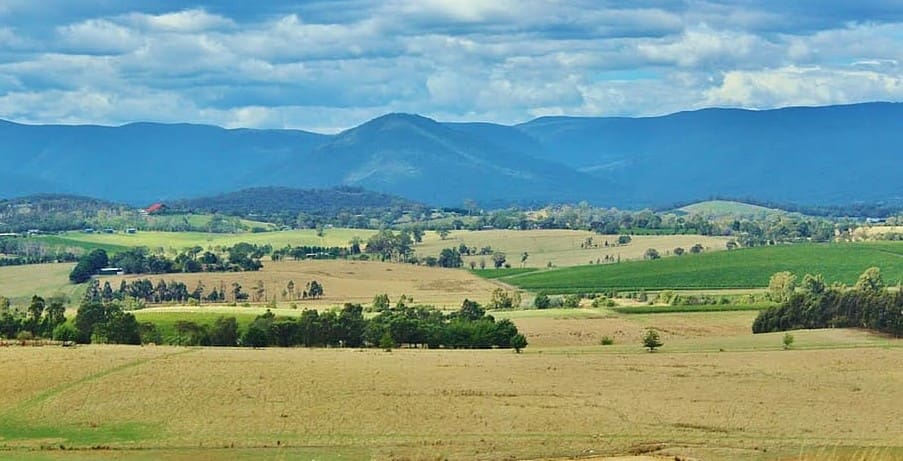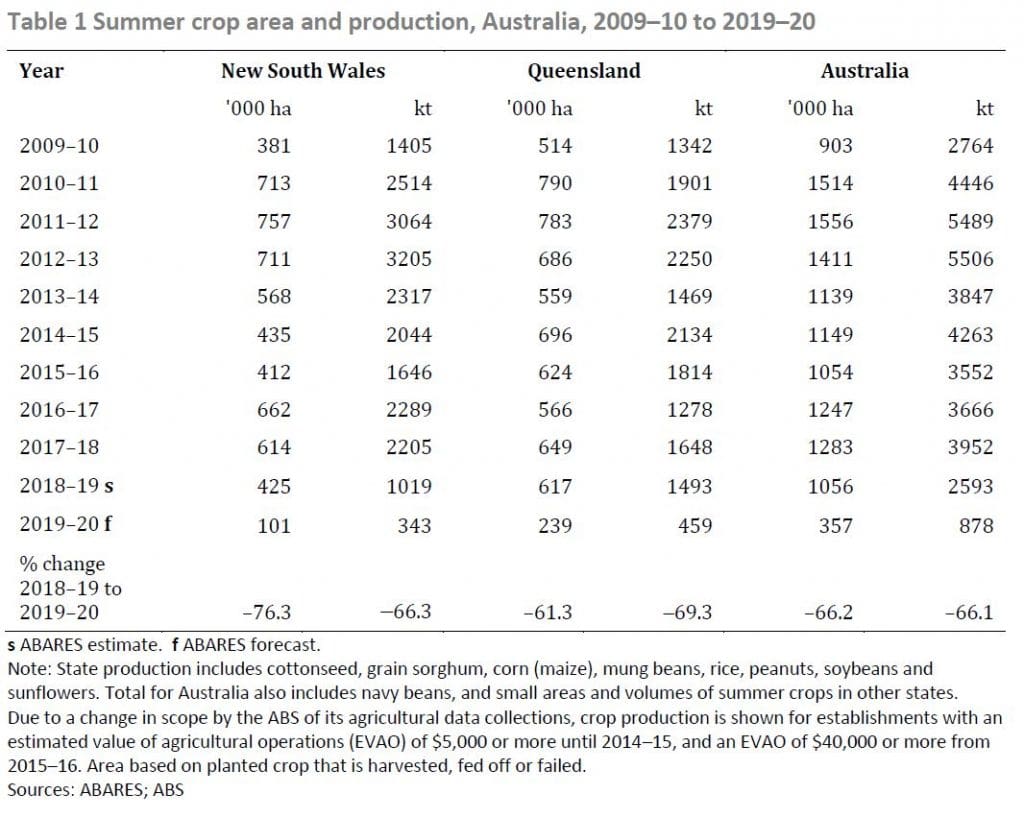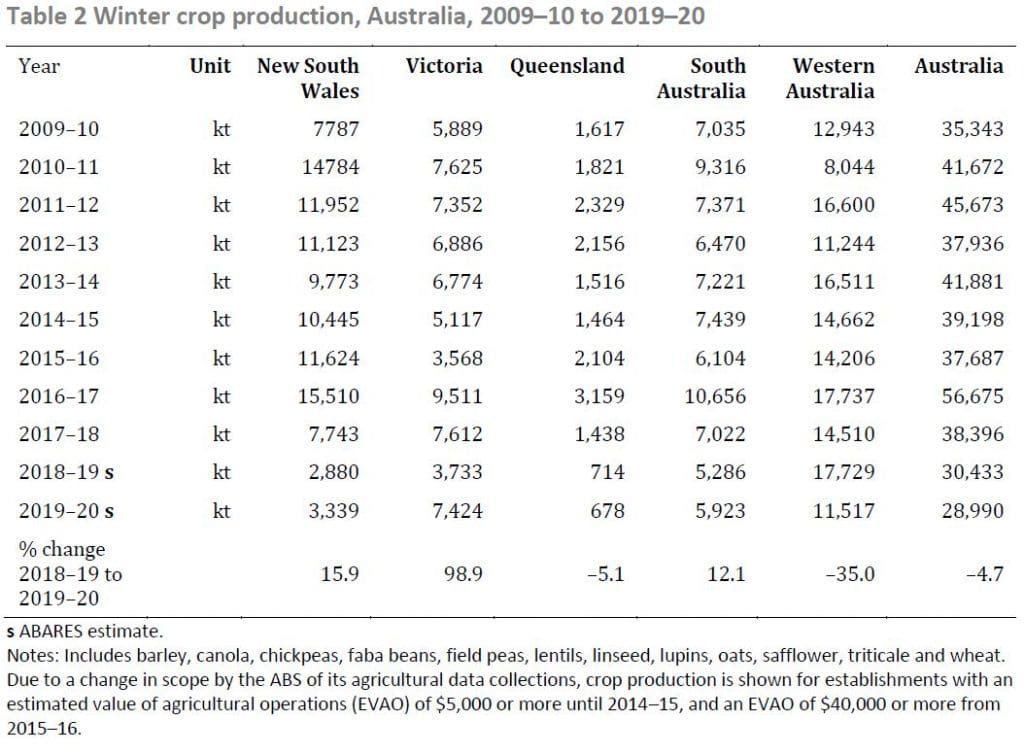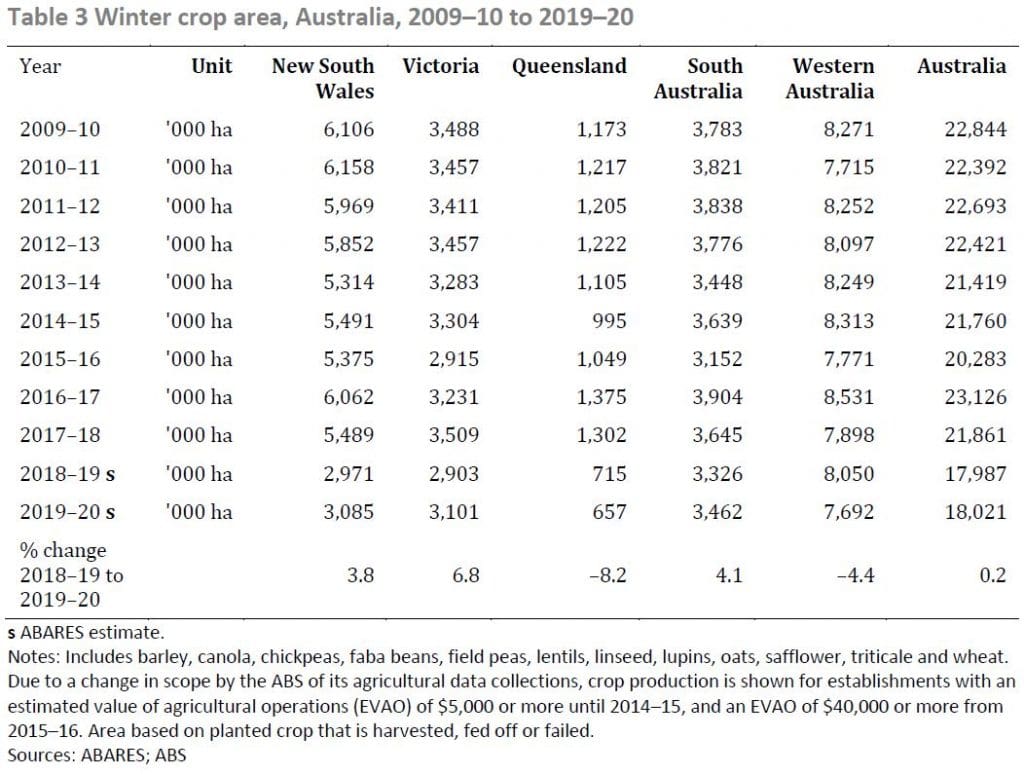
PRODUCTION prospects for summer crops in Queensland and northern New South Wales remain well below average, despite late season rains, according to ABARES’ ‘Australian crop report – February 2020’ released today.
ABARES executive director, Peter Gooday, said it was an extremely trying time for many crop growers, especially those in NSW and Queensland.
“Summer crop prospects were adversely affected by unfavourable seasonal conditions in December that further depleted soil moisture levels to well below average in most summer cropping regions and to record lows in some others,” he said.
“With the planting of summer crops in Queensland and northern NSW now largely complete, we expect planted area and production to be lower than our forecasts of December 2019.
“This largely reflects seasonal conditions in December that were more unfavourable than expected. Rainfall in late January and in February was largely too late to plant more grain sorghum in southern Queensland and northern NSW.”

Mr Gooday said the Bureau of Meteorology’s latest three-month rainfall outlook indicated that for most summer cropping regions in Queensland and northern NSW rainfall was more likely to be below average than above average from March to May.
“We are likely to see a 66 per cent decrease in summer crop production down to 878,000 tonnes,” he said.
The area planted to grain sorghum is estimated to have decreased by 71pc in 2019–20 to 143,000 hectares. Production is forecast to fall by 77pc to around 292,000 tonnes.
The area planted to cotton is forecast to fall by 82pc in 2019–20 to 61,000 hectares because of low supplies of irrigation water and insufficient levels of soil moisture to plant dryland cotton.
The cotton area is estimated to be the lowest since 1978–79 when it was 50,000 hectares.
Cotton production is forecast to decline by 72pc to around 135,000 tonnes of lint and 191,000 tonnes of seed. The average yield is forecast to rise from last season because almost all cotton crops this season are irrigated.
Rice production is forecast to remain low at around 54,000 tonnes because of low water allocations and high water prices.
Winter crop
Mr Gooday said ABARES’ winter crop production estimate for 2019-20 would remain largely unchanged from its forecast of December 2019 at around 29 million tonnes.
“Higher than expected barley and canola production is estimated to have largely offset lower than expected wheat production.”

Wheat production is estimated to have fallen by 12pc to 15.2 million tonnes (Mt), barley production is estimated to have increased by 7pc to 8.9Mt and canola production is estimated to have increased by 7pc to 2.3Mt.
Amongst other crops, chickpea production is estimated to have remained largely unchanged at 281,000 tonnes and oats production is estimated to have increased by 1pc to 900,000 tonnes.
Winter crop area is estimated to have increased slightly in 2019–20 to 18 million hectares.

Source: ABARES
‘Australian crop report – February 2020’ is available here
Grain Central: Get our free daily cropping news straight to your inbox – Click here

HAVE YOUR SAY